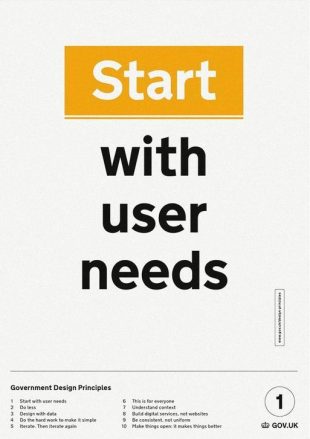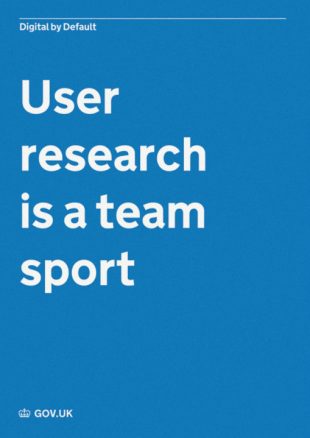COVID-19 has been a catalyst for fast-tracking the digital transformation of commercial and public sector organisations around the globe. As more citizens turn to digital for information and access to services, the stampede to meet this need fast is underway.
Stampede to digital services
Spurred into action by disruption on a global scale, organisations are mobilising into digital enterprises at breakneck speeds. Fortunately, in UK government departments, the march towards digital transformation was already well underway when the pandemic forced sweeping changes across the world.
In the current climate, work that might have taken a year to roll out is being compressed into weeks. Updates and easements are being deployed faster than ever to meet demand. When that degree of urgent and swift action is required, how is it possible to implement new and modified services quickly without compromising the quality of the service?
How to design intuitively
Now more than ever, it's critical that online services are designed intuitively. The current crisis has caused a surge in citizens requiring urgent assistance, from filing for unemployment benefits to applying for pension credit and carer's allowance. No matter what the circumstances, users need to understand what information is required to help the Department for Work and Pensions (DWP) handle requests quickly.
BPDTS’s mission, as part of the DWP family, is to create and run secure and intuitive digital services that meet the needs of millions of people. We, and wider government, believe the best way to deliver is to work in line with the principles set out in the Service Manual. Adhering to the Service Standards enables our employees to make improvements to the way we work as individuals and as teams.
The Service Standards are a key part of the Technology Code of Practice. The set of criteria helps government design, build, and buy technology. Specifically, these standards help us to ensure services we’re involved in introducing or updating:
- meet user needs
- are easier to share across government
- are easy to maintain
- scale for future use
- are less dependent on single third-party suppliers
- provide better value for money
We caught up with Paul Welsh, a User Researcher at BPDTS, to find out why user research is even more relevant when design services need to be accelerated. Paul’s spent the last 5 years working in government on services with Her Majesty's Revenue and Customs (HMRC) and the DWP.

Our Insights:
What are the critical factors to consider when designing services during a crisis?
Paul:
I've been lucky enough to work on a variety of different services at different stages of their development. It's satisfying to be able to influence how a service works and improve it.
At BPDTS, we’ve tried to follow the same principles as we had before the pandemic. First, we need to understand our users and design the service based on their needs. If we don’t do that, inevitably, there will be gaps or roadblocks in the service that could result in our users not getting the outcome or result they expect. If anything, the current situation has highlighted how important it is to design services well.
For example, before the pandemic, some digital services may have relied on other areas, such as operational staff taking customer calls, to help plug gaps in the digital service. Now, that kind of support is reduced to increase capacity in other areas. That’s why it’s more important than ever that we identify and fix issues before a service is rolled out to everyone. We can’t rely on that safety net.
Our Insights:
What are the top 3 things you think are essential to good service design?
Paul:
That’s a difficult question to answer. The Service Standard that most government services are assessed against has 14 areas; I'll go with 3 things I feel strongly about.
Know what you're solving
The first is pretty basic but important: make sure the team validate and understand the problem they need to solve. You could have the most skilled team in the world, but if that team doesn't understand the problem that needs solving, they’ll design the wrong thing.
Create fully accessible services
Next for me is ensuring everyone that needs to use the service can, and that the service is designed to include a support model for those users that require it. Services need to be accessible, considering any disabilities or conditions a user may have. The support model is key to support users who are new to digital services or have less skill or experience using them.
Know how you’ll measure performance
Finally, I think when you're designing a service, it's important to think about how a service will be measured in terms of how it's performing. Measuring is probably an easier thing to do for transactional services, where the result is clearer or better defined. Regardless, the same thought and consideration are needed for services that provide information to a user. Measuring performance is the only way to know if you've designed the right thing.
Our Insights:
How are BPDTS implementing user-centred design in the digitalisation of services?
Paul:
We follow the same design principles that all government departments should be following. There has been a shift recently to encourage better overall service design and not just concentrating on the digital side of new or existing services; this results in a much more joined-up approach and ensures users get a consistent experience across all channels.
Our Insights:
How does user research factor into the process for making change recommendations?
Paul:
Ideally, user research should be at the heart of any design changes that will impact a user’s journey. We carry out research with users of the service and those who could potentially use it in the future. We do this to understand their needs and work with the design team to ensure anything we develop or change will meet the users need.
Following an agile approach means iteration is expected and encouraged. We continue to test and improve designs based on how they perform. We can use a mixture of analytics and further insight from users to help measure performance.
Our Insights:
How does user research make a difference to the citizen’s experience?
Paul:
Research will only make a difference to the citizen if it influences the design and development of a service. That’s why it's vital that user researchers are embedded in teams so that everyone in the team understands the users they are serving and the problem they are trying to solve. If this is done well, the results should be a service that is empathetic to its users and allows them to use it easily.

Success is seamless and forgettable
Content designers and user researchers are always on the lookout for potential usability pitfalls. User research unlocks insight that can steer a design team to success. By understanding how users interact with a service and by paying attention to things that might be confusing, design professionals can create services that are easy to use and accessible to everyone.
"Often, citizens have no choice but to use our services. If our services are seamless but forgettable, we’ve succeeded," explains Paul.
Learn more
Stay up to date with what's happening at BPDTS. Sign up for email updates whenever new content gets posted.
Connect with us on LinkedIn, and follow us on Twitter.
Are you thinking of joining us? Please have a look at our current job openings.
Leave a comment